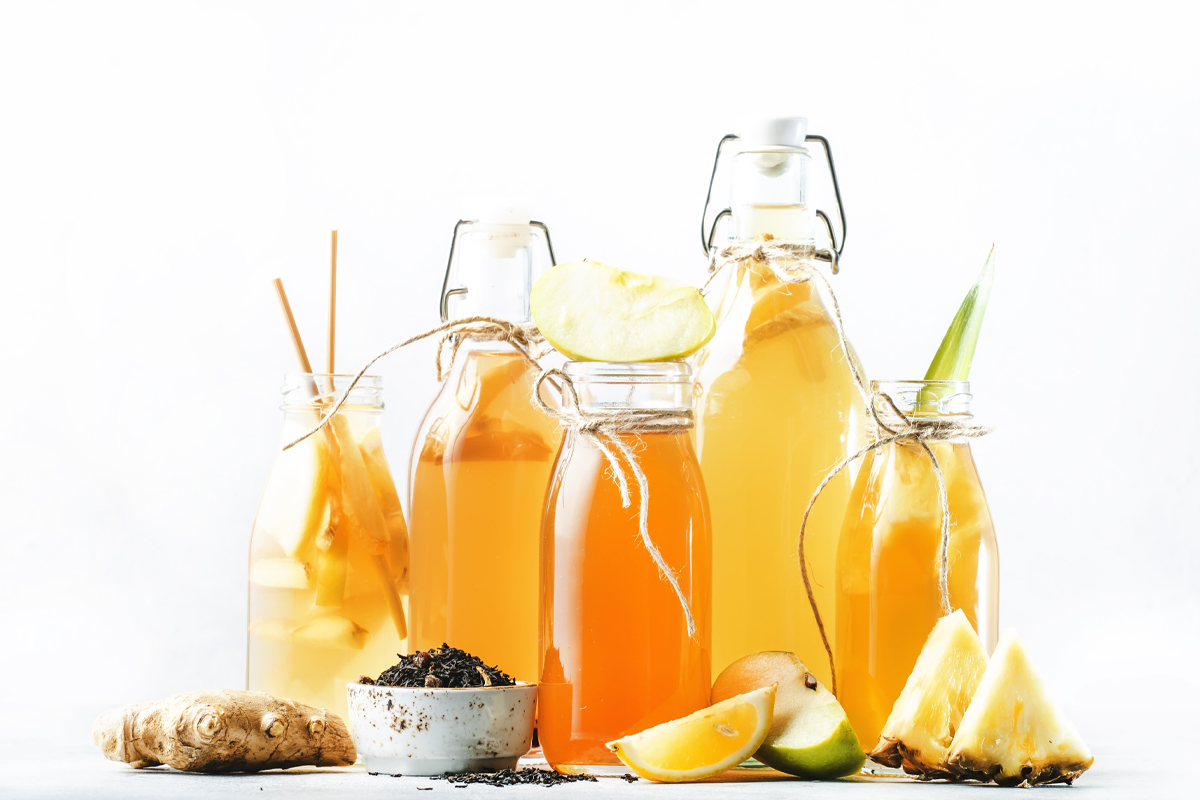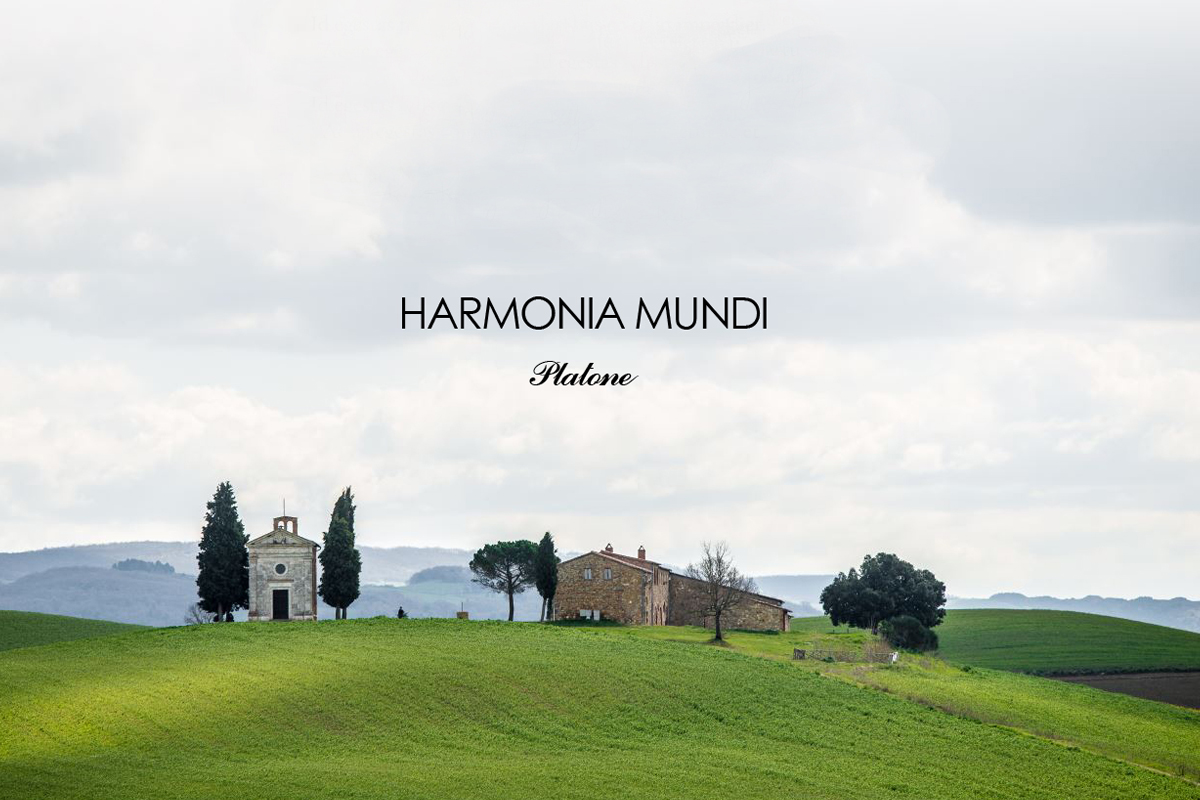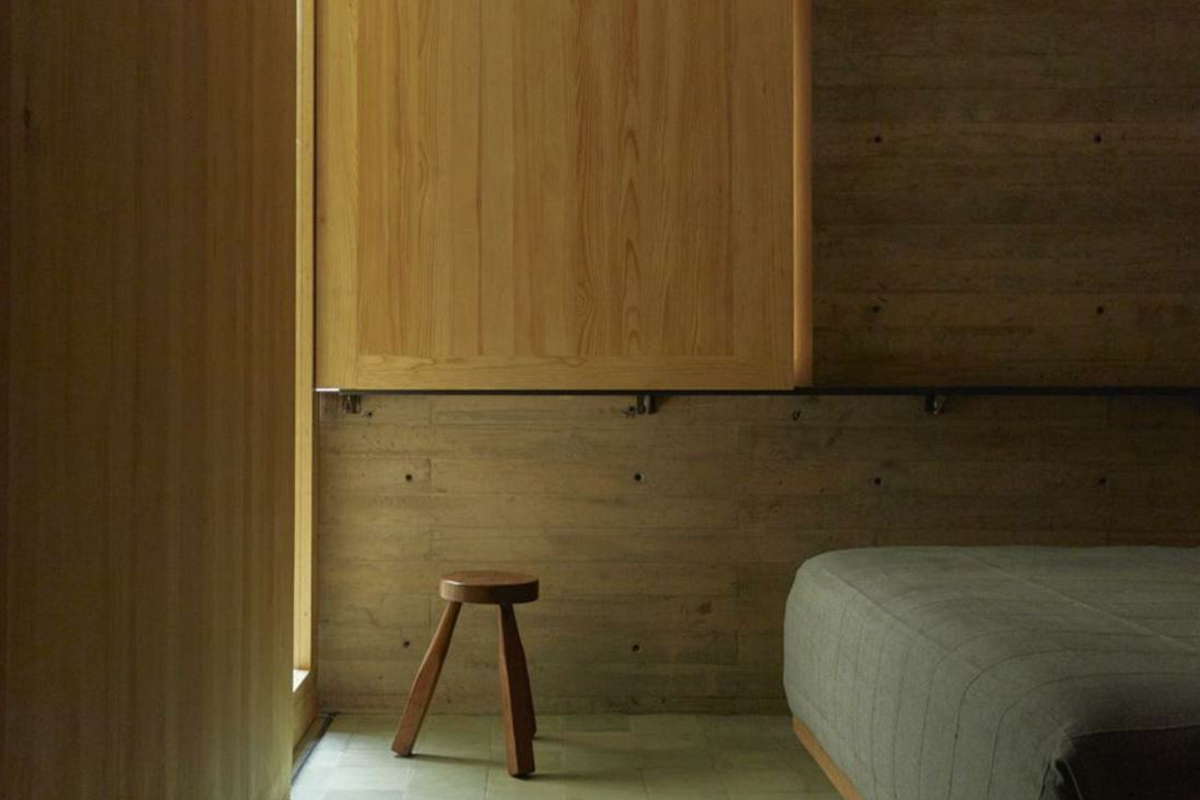Kombucha was just the beginning. While we were discovering the effervescence of this fermented tea, the world’s best chefs were already experimenting with a much broader and more fascinating universe. Fermentation has become their secret laboratory, where they transform scraps into culinary gold and create flavors that simply don’t exist in nature.
If you think fermenting is just about grandma’s sauerkraut, you’re way off. Today fermentation is the final frontier of signature cuisine: more sustainable than meat, more creative than molecular gastronomy, more exclusive than any rare ingredient you can imagine.
The underground movement of master fermenters
Ariel Hagen, the young Florentine talent who won a Michelin Star at Saporium, has transformed an entire wing of his Tuscan estate into a fermentation laboratory. Here, in the heart of the Sienese hills, he produces fermented cheeses from sheep’s milk and compotes that mature for months. “It’s like having a wine cellar for food,” he tells me during a private visit. “Each jar contains a story of time and transformation.”
In London, Douglas McMaster went even further: he opened the Fermentation Factory, where he transforms scraps from his partner brewery into gourmet miso that he sells to starred restaurants. His trick? A koji so powerful it can ferment anything in days instead of months. It’s the perfect example of how luxury today also means responsibility.
But it’s Rasmus Munk in Copenhagen who has taken all this to another level. His Alchemist is no longer just a restaurant (already #5 in the world): it’s a research center where he’s literally transforming CO2 into food through fermentation. It sounds like science fiction, but his guests are already tasting the future.
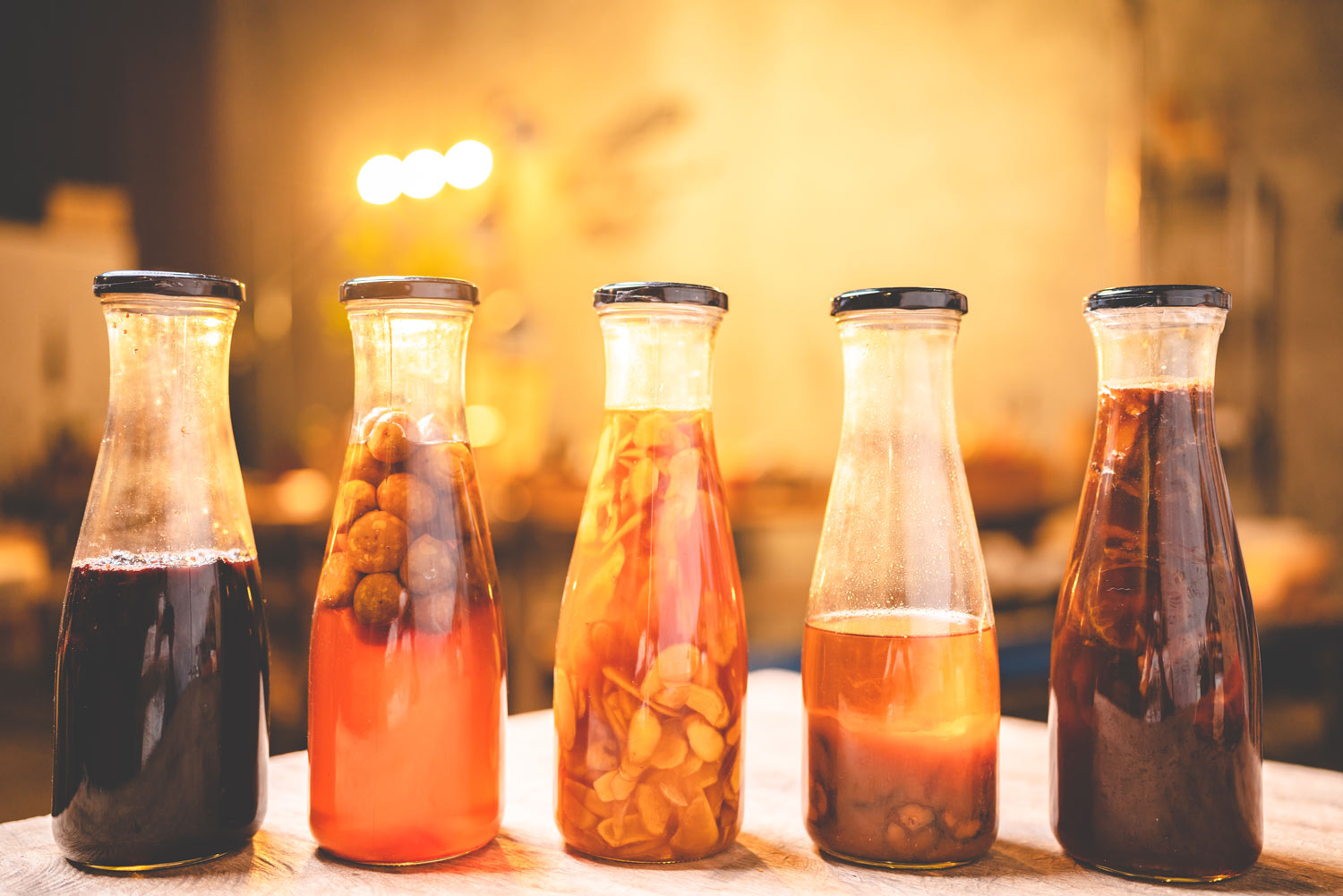
The secrets from overseas
David Chang continues to be the pioneer everyone follows. In his New York laboratory he’s creating “Hozon pastes” using koji on cashews and chickpeas that taste like miso but have never seen a soybean. The result? Pure umami you can spread on bread like vegetable caviar.
In Cleveland, Jeremy Umansky has become the guru of Western koji. In his delicatessen he produces over 35 varieties of fermented foods, from “Popcorn Koji” (yes, you read that right) to roasted pumpkin miso. His creations end up on the tables of the best American restaurants.
In Asia, Garima Arora in Bangkok has a secret room in her restaurant where she ferments Himalayan berries for ice creams you won’t find anywhere else. She’s the first Indian woman chef with two Michelin Stars, and fermentation is her superpower.
How to bring this magic to your home
The beauty of fermentation is that you can start tomorrow, with what you already have in your kitchen. You don’t need expensive equipment or exotic ingredients. You need curiosity and a bit of patience.
Start with Jun Tea, kombucha’s “elegant brother.” It uses premium green tea and organic honey instead of black tea and sugar. The result is delicate, floral, with natural bubbles finer than champagne (little secret: it’s what I serve at home when I want to impress guests without saying what it is…!)
Try Mexican tepache: take the peel of an organic pineapple, add spices like cinnamon and cloves, a little brown sugar, and let it ferment for 3-4 days. You’ll get a sparkling, spiced drink that’s the perfect aperitif for a summer dinner.
Water kefir can also be your ace in the hole: crystals that look like raw diamonds and ferment any sweet liquid. Try it with pomegranate juice or hibiscus flower tea. Everyone will think you have a secret cellar, when instead you made it in a jar!
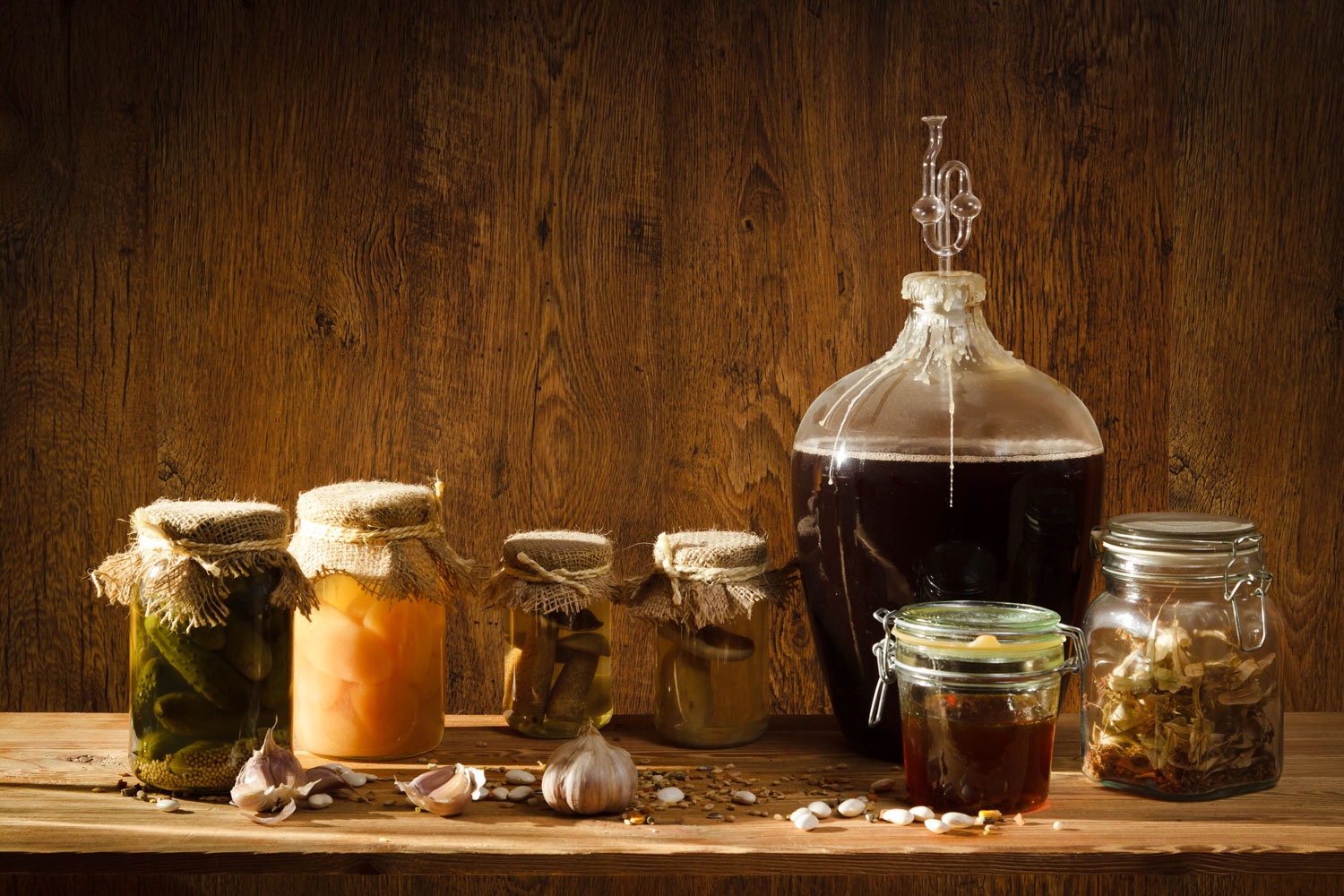
The art of intelligent equipment
You can use any jar with a lid. When you have a nice one, don’t throw it away, but use it to see the magic in action. Fermentation is also very beautiful to see and you can leave the jars in view as decorative objects.
For those who want to go further, ceramic containers are the ultimate: they maintain constant temperatures and age ferments as a cellar would. Imagine yourself serving a two-year-old homemade miso. There’s no better party trick.
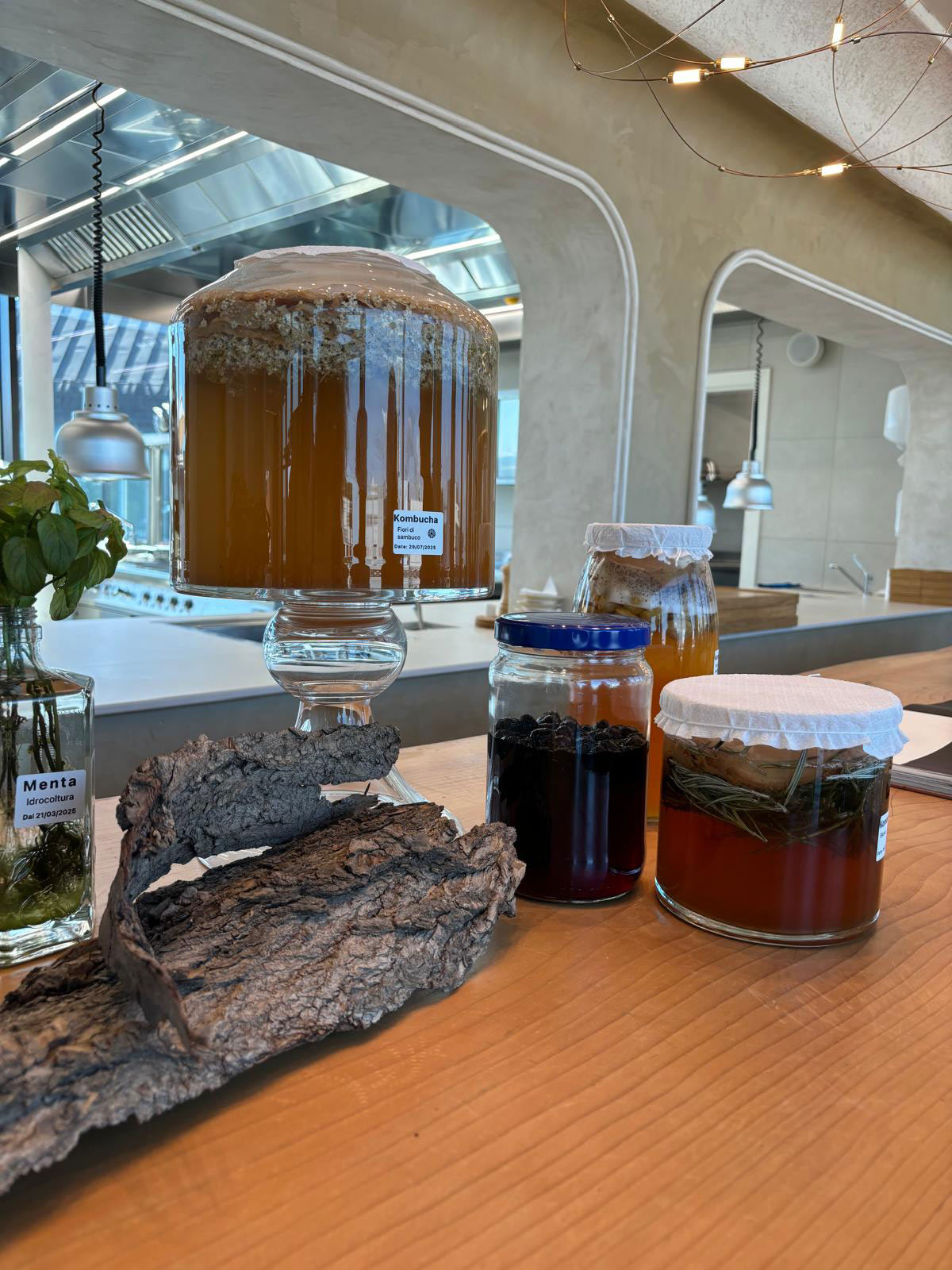
Sustainability as the new status symbol
What makes fermentation irresistible isn’t just the taste: it’s the message. When you serve an aperitif made with fruit peels you would have thrown away, you’re making a statement. You’re saying you’re so ahead that you transform waste into something extremely cool.
The future is already here
Fer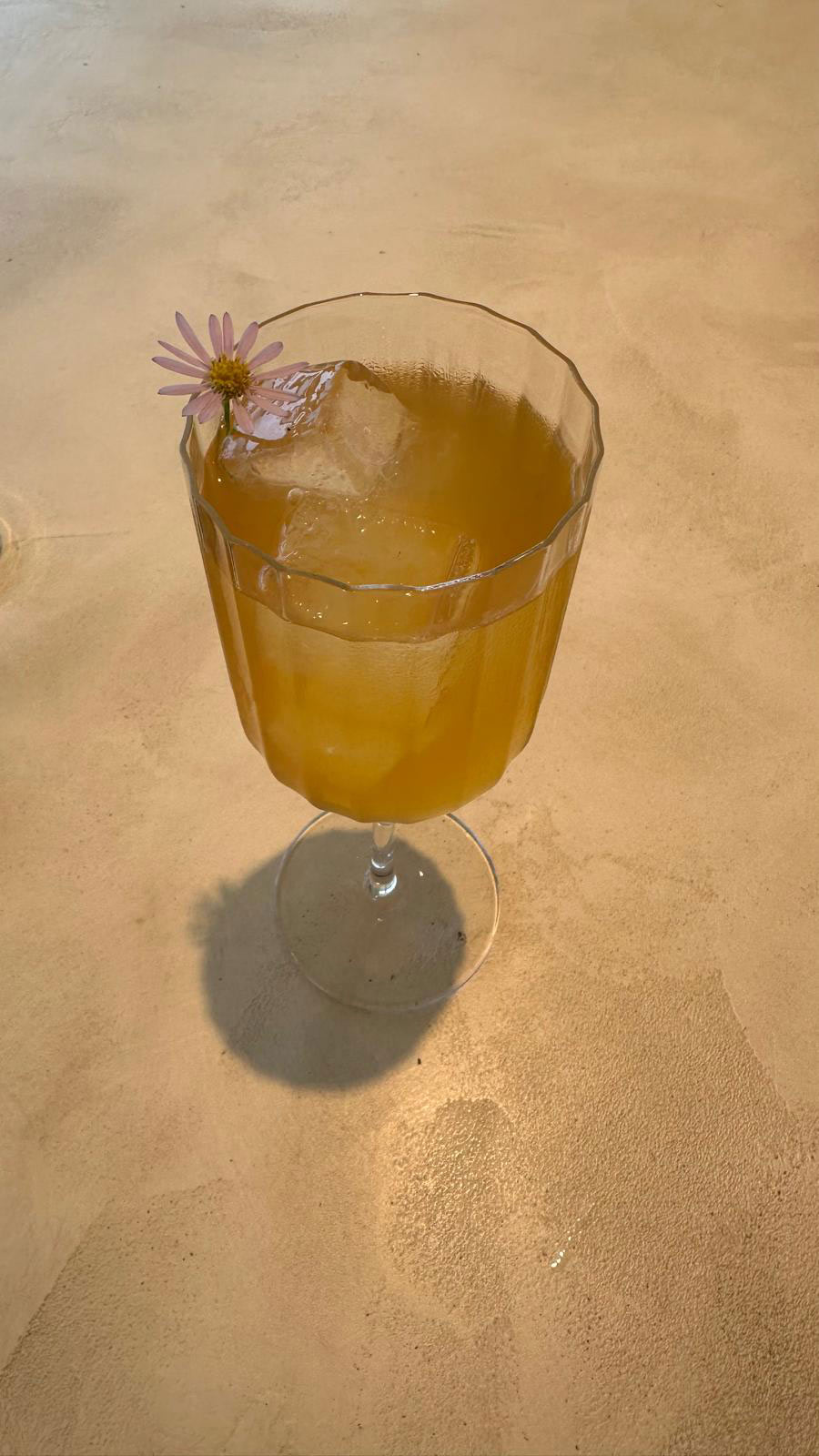 mentation isn’t a passing trend. It’s how the world’s best chefs are reinventing cuisine to be more creative, more sustainable, more exclusive. And the best part? Youcan start today.
mentation isn’t a passing trend. It’s how the world’s best chefs are reinventing cuisine to be more creative, more sustainable, more exclusive. And the best part? Youcan start today.
Start withsomething simple: buy water kefir grains online, or try making your first tepache. Within a week you’ll have something unique, delicious (and very healthy) to drink, and within a month, you’ll be addicted to the magic of transformation.
Because ultimately, that’s what fermentation is: the art of transforming the ordinary into the extraordinary, using only time, patience and a pinch of microbiology. It’s delicious sustainability, the future that tastes like the past.
